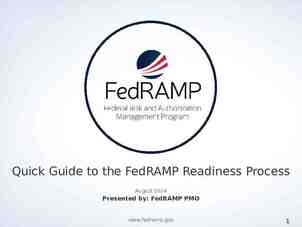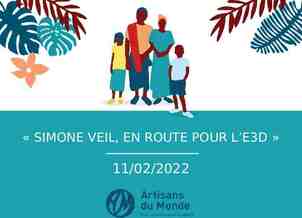Multiple forms of hate speech targeting women in online space
21 Slides641.80 KB
Multiple forms of hate speech targeting women in online space SELMA MUHIČ DIZDAREVIČ INACH Board Member Charles University, Faculty Of Humanities, Department Of Applied Social Sciences, Civil Society Studies [email protected] [email protected] INACH ANNUAL CONFERENCE AMSTERDAM, 3-4 NOVEMBER 2022
Women in online spaces Research shows that women are more likely than men to be targets of online violence According to Barker and Jurasz, "Although there has been a noticeable increase in the number of women speaking publicly about their experiences online, [.] Too often online misogyny is downplayed as mere teasing that women should simply endure as the price of being online. Such reactions and attitudes are all the more worrying because they come not only from perpetrators of hate speech and online groups but also from law enforcement and policy makers."
Amnesty International conducted an online survey of women aged 18-55 in the UK, USA, Spain, Denmark, Italy, Sweden, Poland and New Zealand about their experiences of online abuse or harassment on social media platforms. It found that online attacks can have serious psychological effects, with women reporting stress, anxiety or panic attacks and lower self-esteem as a result of abuse. Around two-thirds of women who have experienced online abuse or harassment in the UK (67%), New Zealand (64%) and Italy (68%) reported feeling anxious at the thought of using the internet or social media. Online attacks have a silencing effect on women or can trigger self-censorship, with more than 3/4 (76%) of women in eight countries who have experienced abuse or harassment on social media having changed the way they use social media platforms as a result
But it is even more important to fight against attacks, support each other and share experiences. As Pamela Merritt, an American sexual and reproductive rights activist, says in the aforementioned survey, "I think it's very important for women, and especially women of colour, to stay online. It's important that we create our own space where we can be safe and share our thoughts. We should see this harassment for what it is: an extension of patriarchy and oppression. The goal of online harassment is to erase women and women of color from the public dialogue. The internet is therefore a space where we have clear influence, and it is here that harassers want to silence us.“
In the face of misogyny, therefore, some authors write about the challenges of digital feminism. Helga Sadowski, for example, postulates three types of digital feminism: street activism planned through digital media, internet-only movements created on social media, and activism fighting against internet-related problems.
And all this applies not only to ordinary users, but also to women in positions of power. Women politicians or public figures in general are at greater risk of digital attacks, attacks on their privacy and that of their children, and sometimes even physical violence. Harmful (but often legal) hate speech, online violence against women, and gender-based online abuse as a phenomenon are growing rapidly, with 46 percent of women worldwide receiving sexist or misogynistic comments as a form of online abuse.
The aforementioned research by Amnesty International has shown how much abuse female politicians from all sides of the political spectrum have received online, especially in the weeks leading up to election day. More specifically, the study confirmed that female politicians with other intersecting identities such as (but not limited to) race, religion and sexual orientation received significantly more online abuse, with black and Asian women generally receiving 35% more abusive tweets than white female MPs.
Too often, misogyny on the internet is downplayed as a mere joke that women should simply endure as a tax for participating online. Online abuse is still too often seen as an 'online only' phenomenon. It is assumed to be distinct from other crimes and therefore does not affect or harm targets of attacks, despite studies showing harmful effects on victims. According to some authors, the internet creates a "networked misogyny" whereby the online environment leads to increased levels of insults and hate that women encounter online. According to Harmer and Lewis, empirical findings suggest that online attacks disproportionately target women, particularly women of colour (or in the Czech context, those with minority identities) or those who espouse explicitly feminist ideas. However, according to the authors, women can defend themselves and they do so in two ways: a) by pointing to systemic inequalities and b) by referring to their own experience of abuse/attacks in the online space.
Returning again to specific experiences and examples from the empirical research, in-depth interviews with 109 bloggers who write about feminism, family and/or maternity politics revealed that 73.4% of them had negative experiences with blogging and/or using social media. Most of these negative experiences involved not only abusive comments, but also stalking, trolls, rape and death threats, and unpleasant offline encounters. Strategies to combat this included moderating comments, exposing insults, adapting, and solidarity. However, for many women, such a hateful environment leads to self-censorship or abstinence from the online environment.
Ekart analysed the results and found, for example, that of the 80 women with negative experiences, 26 said they had encountered trolls and/or shit storms. These include a large number of insulting and/or inflammatory comments on the internet about a blogger in a short period of time A 77-year-old white female blogger, veteran LGBTQ advocate in Germany said she encounters troll posts every week. The 38-year-old British feminist and blogger said a troll had been stalking her since day one, sending "ominous comments" about her privacy, abortion, and business.
Half of the 80 women with negative experiences reported another wide range of intersecting onlineoffline issues, such as parents, relatives, or colleagues being angry about their blogging, having their blog hacked, having their identity compromised, having their content plagiarized, having their site linked to, or being visited by pedophiles, right-wing activists, or people with a fetish. For example, a 39-year-old white American feminist blogger said that people have thrown garbage on her lawn and posted her identity, address and phone number on a dating site. Another 35-year-old white American feminist mother said that people had sent police officers and health department workers after her for alleged misdemeanours. In Germany, the Facebook page of a 35-year-old white feminist campaigner had the page's logo pasted on it with the twisted slogan 'feminism is fascism'. A 40-year-old Swiss mother said that a colleague had tried to use her blog against her husband (albeit unsuccessfully). A forty-eight-year-old British feminist blogger said that people manipulated a Google search of her name to take users to a pornographic site; her blog appeared on a site designed to attack female bloggers.
Intersectionality For the purposes of this presentation, intersectionality will be defined as the web of connections between social categories such as race, class and gender, especially when it leads to further disadvantage or discrimination. According to the second European Union survey on minorities and discrimination - Roma women in nine EU Member States, published by the Fundamental Rights Agency (FRA) in 2019, which provides data from Bulgaria, the Czech Republic, Croatia, Hungary, Portugal, Romania, Greece, Slovakia and Spain, the gender dimension is often neglected or insufficiently taken into account in reports and policies concerning the Roma population. In some countries, Roma women are still disproportionately affected by early marriage, which impacts on their education and employment prospects.
The disregard for the gender dimension and the pressures within the Romani community on the part of men may be the reason why we have so little information about hate speech directed against Romani women. An example of this composite hate speech combining misogyny and antigypsyism can be found in the sCan Intersectional Hate Speech Online report. In an example from Italy, a Roma woman was accused of stealing and was vilified with the insults 'Zingara' and 'puttana' on social media. In addition, the post was offensive and over-generalised about Roma. The misogynistic slur "whore" would not be used in Italian against a man.
Within the framework of the project of the Czech Women's Union called "Together against the spread of hatred and misinformation", I am conducting research on information/media/digital literacy, especially among senior women. Currently, almost 200 women (and a few men) have participated in the research. Here I will present some of the results that may be relevant to the topic of this presentation.
Most of the respondents are aged 71-80, with secondary school education, with a residence size of up to 10,000 inhabitants. Majority of the sample respondents use digital technology every day, manage their account online. The vast majority connect to the network via computer and from home. They shop online. A relatively low number of female respondents rated as the main source of getting information online from the internet, but what is clear is that they often use emails from strangers and groups on social networks or apps on their phone. However, they mostly get information from emails from people they know.
Respondents feel able to search for information online, evaluate its truthfulness and usefulness. When it comes to the relevance of the source, the sample is split more in half, with slightly less than half feeling unable to assess the relevance of information on the internet. For credibility, respondents feel able to judge the source, but there is still a relatively large group that does not feel that way. Respondents have largely not experienced fear of content on the internet, nor have they experienced cyber-bullying either personally or on someone they know. However, it is noteworthy that roughly a quarter have experienced fear. Although the majority of respondents know what hate speech is and can identify it online (95), 77 responded negatively. Feeling confused was not experienced by the majority (96), but again 71 was.
Most were not discouraged by the fear of engaging in online discussion (118), but still 50 respondents answered positively. The vast majority do not know who to report hateful or dangerous posts online to and most have never done so. When respondents are disturbed by content online, they usually leave the site with the information that disturbed them or turn off their computer, tablet or phone. More female respondents know what a hoax is than not. Most report that they have come across fake news on the internet.
Regarding the credibility of news sources: the vast majority tend to distrust the social networks (next answer rather trusts them) Czech Radio is rather trusted by the majority (next answer, I trust) private radio stations are rather trusted by the majority (next answer I don't know) news dailies are rather trusted by the majority, followed by I don't know 73 respondents rather trust public television, but 41 rather distrust it, the next answer is I trust it the main news servers (Novinky.cz, iDnes.cz, Aktualne.cz) are rather trusted by 21, trusted by 20 and the next answer is no trust at all 60 rather distrust commercial TV stations, 55 rather trust and 18 don't know for alternative desinfo websites the vast majority answered that they do not know, followed by I do not trust and I rather do not trust. However, 16 respondents rather trust and 4 trust the disinformation websites The majority of respondents would like more support and information regarding network safety. The best form for them is printed information and then personal contact
Conclusion As we have had the opportunity to see, women are exposed to numerous problems more and differently than men. The Internet has enabled unprecedented opportunities for connection and mutual support, but it leads to new risks that cross over into the real world. There are efforts to monitor social networks and push for regulation, mostly by NGOs, but there is a need for the public and states to get involved. In particular, we need to think about the vulnerability of women who have an identity that disadvantages them in some way. In this article, I have used the example of Roma and senior women. Senior women are often undervalued and exploited in the digital space, but the research shows that there are often prejudices about them.
References Barker, K., and O. Jurasz. "ONLINE MISOGYNY: A CHALLENGE FOR DIGITAL FEMINISM?„ Journal of International Affairs 72, no. 2 (2019): 95-114. Dhrodia, A. 2017. Unsocial Media: The Real Toll of Online Abuse against Women. Amnesty International. Ekart, S. 2018. Fighting for recognition: Online abuse of women bloggers in Germany, Switzerland, the United Kingdom, and the United States. In new media & society 2018, Vol. 20(4) 1282–1302. FRA, 2019. Roma Women in Nine EU Member States. https://fra.europa.eu/en/publication/2019/roma-women-nine-eu-member-states Harmer, E., Lewis, S., 2022. Disbelief and counter-voices: a thematic analysis of online reader comments about sexual harassment and sexual violence against women, Information, Communication & Society, 25:2, 199-216, DOI: 10.1080/1369118X.2020.1770832 Sadowski, H. ,2016. From #aufschrei to hatr.org: digital-material entanglements in the context of German digital feminist activisms. Feminist Media Studies 16(1): 55–69. sCan, 2019. Intersectional Hate Speech Online. Available at http://scan-project.eu/wpcontent/uploads/sCAN intersectional hate final.pdf Statista, 2019. “Most common types of online abuse or harassment experienced by women worldwide as of July 2017” https://www.statista.com/statistics/784833/online-harassment-women-types/ Paciello, M. et al., 2021. Online sexist meme and its effects on moral and emotional processes in social media. In Computers in Human Behavior 116 (2021)
Thank you for your attention. See you next year.







